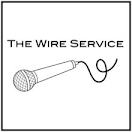EOTO 3 Reflections
For our third EOTO, we discussed specific terms and concepts to help understand certain implications or actions within journalism.
The first topic that I learned about was halftone. Halftone was a new and more productive way of printing. Halftone only uses small dots of black ink to print on paper. This technique consists of breaking up an image into a series of dots to produce all of the tones within a photograph. The tiny dots use a kind of gradient effect to create certain images or words. The dots are actually made by screens that have a varying number of lines per inch, these lines determine the number of dots. For newspapers, the range is between 50 to 85 dots per inch. In higher-quality work, it is closer to 120 to 150 lines per inch. The halftone was actually quite remarkable, as the first image was able to be published in a newspaper with this technique in 1880, seen in the image to the left. Halftone techniques are still used today, but instead of a screen, it is generated digitally. That alone proves how influential the halftone technique was and that its design is still very beneficial and effective in printing today. Due to the impact of the Associated Press along with other wire services, wire services are extremely important and valuable to creating and distributing news across all different platforms today.
finishing a story, incorporating true facts, or using someone's first-hand experience.
Today, it is debated if the term citizen journalism is even accurate when describing the influence and importance of citizen journalists across the globe.
While there are a number of others, these specific terms and concepts were very interesting to me and helped me in understanding some of the more specific aspects of the kind of journalism we see today.






No comments:
Post a Comment